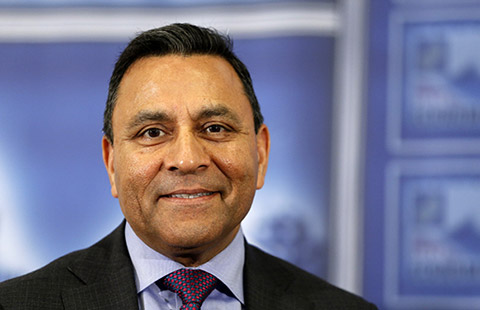Christie's goes through digital renovation
After industries such as music and publishing were severely disrupted by online competitors, art auctioneers found themselves facing two options: to either integrate digital practices into their operations, or lose additional chunks of the market to electronic retailers such as Amazon.com Inc.
The e-commerce giant edged into the fine art world by launching Amazon Art on Aug 6, an online shopping experience which features a variety of artworks from more than 150 galleries and 4,500 artists across the world. And some transactions have crossed the million-dollar threshold.
In an interview with Fortune magazine Christie's Chief Executive Officer Steven Murphy said that he takes Amazon's move seriously, and that it is a "major event" - one that causes some concern.
Christie's has been positively embracing the digital era since it launched Christie's Live, a real-time online bidding platform, in 2006. It held 11 online exclusive auctions in the first half of the year, in which an average of 46 percent of buyers were new clients. In the same period, its website, Christies.com, saw an increase of 22 percent in visitors from 190 countries and regions, and a growth of 96 percent in visitors using mobile devices.

During the period, 26 percent of the people who registered to bid used Christie's Live, and the number of Chinese online buyers rose 19 percent.
"This year, we'll have almost 60 online auctions at Christie's of very high-quality materials, and we have achieved great success in the first half of the year. There will be more in years to come," Murphy told China Daily in an exclusive interview.
Murphy's appointment in 2010 surprised many people, not only because he was the first American ever to lead the auction house, which is nearly 250 years old, but also because he had no experience in the fine-art world.
Murphy previously worked at music and book publishing companies, including Disney Publishing Worldwide, EMI Music and Rodale. After joining Christie's, he has stepped up the convergence of the Internet and art sales.
"Having observed from a distance the beginning of electronic books and having seen closely the emergence and growth of online sales of music, we decided two years ago to build the full online services of Christie's, to place it ahead of the wave," Murphy said.
The auctioneer launched iPhone and iPad apps in 2009 and 2010. Its pilot online-only auction in 2011 sold nearly 1,000 pieces of jewelry, fashion and decorative art items from actress Elizabeth Taylor's collection. That auction fetched $9.5 million, nine times the pre-sale estimate.
The company also put online such major collections as those of James Bond memorabilia, which attracted bidders from 42 countries last year, items from the Andy Warhol Foundation in March, and 18th-century Chinese white porcelain pieces in July.
Christie's wasn't the first among traditional auctioneers to launch digital innovations. Its major rival Sotheby's and Amazon jointly operated an art-selling website in 1999, which, however, failed to gain traction and was shut down in less than a year.
That mishap didn't stop auctioneers from stepping up the pace of their digitalization drive over the past years, especially after the competition heated up as newcomers, such as Artprice.com and Paddle8.com, expanded their presence to the lower and middle-price range of the online art market.
Sotheby's digital assets also include iPhone and iPad apps, as well as the BidNow platform through which buyers can watch live auctions and bid online.
A Chinese player, China Guardian Auctions, has been operating its online business, Artrade.com, for 13 years, selling traditional Chinese art, Western art and modern works. Poly International Auction operated its first online auction in May, in partnership with online shopping giant Taobao.com.
A report on the online art trade sector, jointly issued by international specialist insurance group Hiscox and London-based art market analysis firm ArtTactic in March, said that "buying art based on a digital image has become the norm rather than the exception".
That view is supported by the fact that 71 percent of art collectors surveyed have bought art online, and 89 percent of the galleries regularly sell art to clients based on a digital image only. The report also pointed out that "reputation and trust remain critical in the online market".
"Some auction houses are renovating sales models by exploring e-commerce. If, meanwhile, they pay adequate attention to the authenticity and quality of items sold online, the practice will provide a much broader platform for works of modest prices and help artists whose career is still in its infancy reach out to a more extensive number of viewers," said Gong Jisui, art market observer and professor at the Central Academy of Fine Arts.
"In this regard, e-commerce has a greater social importance than that of those high-end works, which have caught wide media attention because of their mind-blowing prices. The trend will prompt the growth of a new generation of artists and attract young collectors to the art market," Gong said.
Gong added that more spectators in auction rooms are expected to become online collectors of fine art.
Michael Bass, Christie's Americas' vice-president and co-head of the company's Chinese works of art department, told Chinese art portal Artron.net that maintaining a good reputation is essential.
"We devote considerable resources to investigating the provenance and authenticity of all objects we offer for sale, both at live auctions and online sales," Bass said. "For e-commerce, you need bricks and mortar to represent the brand and the expertise."

























